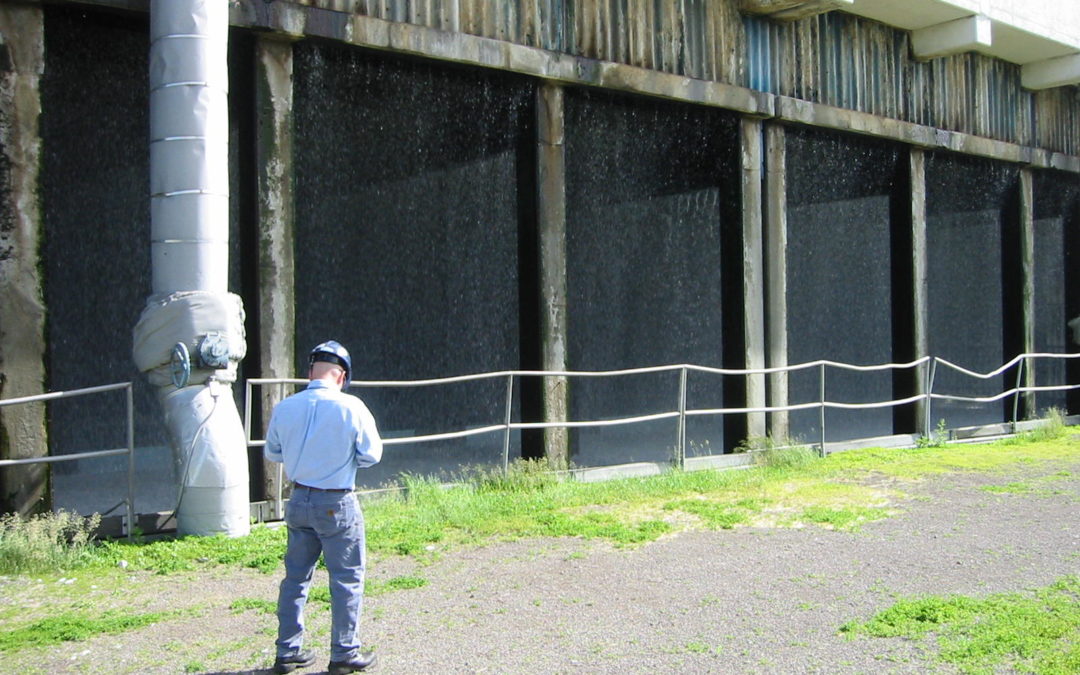Cooling Tower Condition Assessment: Expert Industrial Facility Inspections
A comprehensive cooling tower condition assessment is essential for maintaining industrial facility operations. Our certified experts perform detailed evaluations that identify risks, prevent failures, and ensure optimal cooling tower performance.
Cooling Tower Safety Assessment Protocol
Critical Tower Inspection Safety Measures
Initially, cooling towers need regular attention to perform well. Therefore, our expert cooling tower technicians start every condition assessment by examining safety features. Specifically, we inspect stairways, ladders, and walking surfaces – the most common areas for workplace injuries, following OSHA cooling tower safety guidelines.

Industrial Cooling Tower System Assessment
Mechanical Component Inspection Details
Furthermore, the air moving system demands careful attention. Consequently, we examine:
- Fan assemblies
- Speed reducers and gearboxes
- Drive shafts
- Motors
- Steel supports
Moreover, these components directly impact your cooling water temperatures and plant production. Subsequently, our mechanical system assessments help you spot potential failures before they occur.

Tower Structure Condition Evaluation
Comprehensive Structural Assessment Findings
Additionally, wooden cooling towers face particular challenges, as outlined by the Cooling Technology Institute:
- First, biological decay appears within 5-10 years
- Second, chemical deterioration increases over time
- Third, after 20 years, moisture and temperature damage becomes significant
- Finally, risk of collapse increases without proper maintenance
Cooling Equipment Performance Assessment
Heat Transfer Efficiency Inspection Results
Meanwhile, heat transfer components require special attention. In fact, their efficiency can decline from day one. Therefore, watch for these signs:
- Initially, rising cold water temperatures
- Subsequently, decreased plant output
- Eventually, reduced overall performance
Tower Environmental Impact Evaluation
Environmental Assessment Protocols
In addition, look for these warning signs:
- Firstly, rain around your cooling tower indicates drift eliminator issues
- Secondly, poor drift control leads to equipment damage
- Furthermore, Legionella risks increase with improper maintenance, according to EPA guidelines
- Consequently, regular assessments prevent environmental hazards

Professional Tower Assessment Services
Schedule Your Cooling Tower Inspection
In conclusion, our comprehensive condition assessment helps you:
- Above all, identify critical issues early
- Additionally, maintain safe operations
- Moreover, ensure reliable performance
- Furthermore, optimize thermal efficiency
- Finally, reduce ownership costs
Therefore, contact us today to schedule your professional cooling tower condition assessment. Indeed, one call starts your journey to improved reliability and performance.

